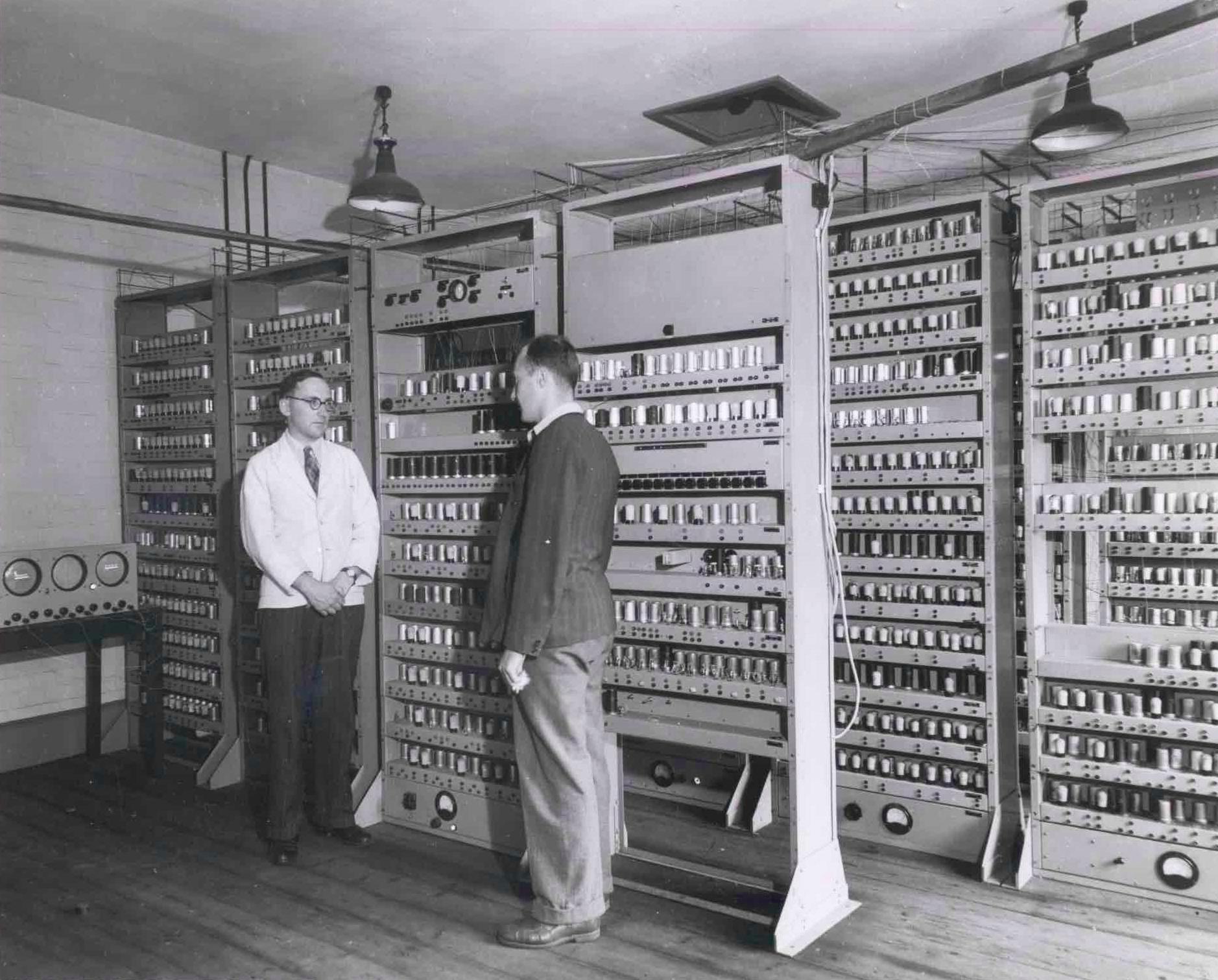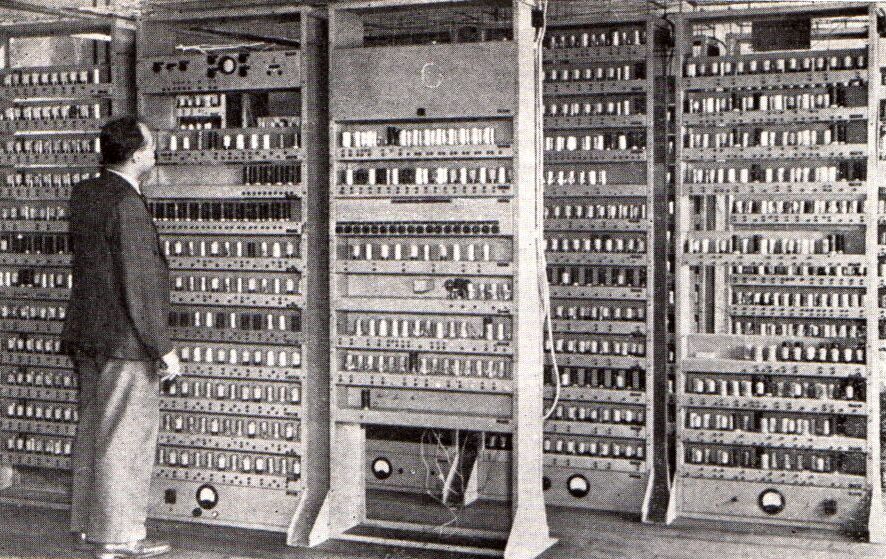66
In the past fifty years, we have seen the digital computer undergo this process of "mediatization." The programmable digital computer was invented in the 1940s as a calculating engine (ENIAC, EDSAC, and so on); by the 1950s, the machine was also being used for billing and accounting in large corporations and bureaucracies.
In the past fifty years, we have seen the digital computer undergo this process of "mediatization." The programmable digital computer was invented in the 1940s as a calculating engine (ENIAC, EDSAC, and so on); by the 1950s, the machine was also being used for billing and accounting in large corporations and bureaucracies.
 Source type: picture
Source type: pictureInfo: U.S. Army Photo", number 163-12-62. Left: Patsy Simmers, holding ENIAC board Next: Mrs. Gail Taylor, holding EDVAC board Next: Mrs. Milly Beck, holding ORDVAC board Right: Mrs. Norma Stec, holding BRLESC-I board
Original size: 1000x793 px. Edit
 Source type: picture
Source type: pictureInfo: ENIAC, control panel at the Moore School of Electrical Engineering at the University of Pennsylvania.
Original size: 735x490 px. Edit
In the past fifty years, we have seen the digital computer undergo this process of "mediatization." The programmable digital computer was invented in the 1940s as a calculating engine (ENIAC, EDSAC, and so on); by the 1950s, the machine was also being used for billing and accounting in large corporations and bureaucracies.
In the past fifty years, we have seen the digital computer undergo this process of "mediatization." The programmable digital computer was invented in the 1940s as a calculating engine (ENIAC, EDSAC, and so on); by the 1950s, the machine was also being used for billing and accounting in large corporations and bureaucracies.
 Source type: picture
Source type: pictureInfo: Maurice Wilkes and Bill Renwick in front of the complete EDSAC
Original size: 1878x1511 px. Edit
At that time, proponents began to understand the computer as a new writing technology; that was in fact the message of the artificial intelligence movement, which began as early as 1950 with A. M. Turing's famous essay, "Computing Machinery and Intelligence." The important cultural contribution of artificial intelligence was not that the computer could be a new kind of mind, but rather that it could be a symbol manipulator and could therefore remediate earlier technologies of arbitrary symbol manipulation, such as handwriting and printing. As long as computers remained expensive and rare, available only to a limited group of experts in large institutions, their remediating functions were limited. In the 1970s, the first word processors appeared, and in the 1980s the desktop computer. The computer could then become a medium because it could enter into the social and economic fabric of business culture and remediate the typewriter almost out of existence.
At that time, proponents began to understand the computer as a new writing technology; that was in fact the message of the artificial intelligence movement, which began as early as 1950 with A. M. Turing's famous essay, "Computing Machinery and Intelligence." The important cultural contribution of artificial intelligence was not that the computer could be a new kind of mind, but rather that it could be a symbol manipulator and could therefore remediate earlier technologies of arbitrary symbol manipulation, such as handwriting and printing. As long as computers remained expensive and rare, available only to a limited group of experts in large institutions, their remediating functions were limited. In the 1970s, the first word processors appeared, and in the 1980s the desktop computer. The computer could then become a medium because it could enter into the social and economic fabric of business culture and remediate the typewriter almost out of existence.
 Log-in
Log-in Source type: picture
Source type: picture